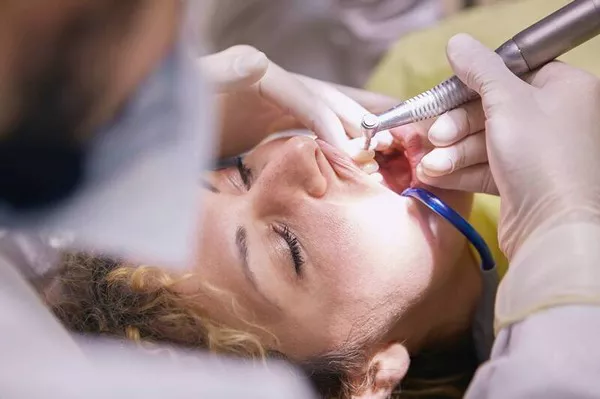The color of our teeth is a topic of considerable interest and concern for many. We often associate a bright white smile with health and beauty, leading to a desire for teeth that are as white as possible. However, the natural color of teeth can vary from person to person, and some individuals may wonder whether yellow teeth are entirely natural. In this comprehensive guide, we will explore the factors that influence the color of teeth, the natural variations in tooth color, and when yellowing might indicate a dental concern.
Understanding Tooth Color
To understand whether yellow teeth are natural, it’s important to grasp the basics of tooth color:
Tooth Anatomy:
Teeth consist of multiple layers, including enamel, dentin, and pulp. The outermost layer, enamel, is translucent and typically white or slightly bluish. Beneath the enamel lies dentin, which is naturally yellowish in color. The color of dentin can become more visible as enamel wears down.
Natural Variations:
The color of teeth can vary naturally among individuals. Some people have naturally whiter teeth due to the thickness and translucency of their enamel, while others may have teeth that appear slightly yellow due to more prominent dentin or thinner enamel.
Aging:
As we age, the enamel on our teeth naturally thins, revealing more of the underlying dentin. This can lead to a gradual yellowing of teeth over time, making it a common occurrence among older individuals.
Genetics:
Genetics play a significant role in tooth color. Some people are genetically predisposed to have naturally yellower teeth, while others may have naturally whiter teeth.
Lifestyle Factors:
Lifestyle choices, such as diet, tobacco use, and oral hygiene practices, can influence tooth color. Staining foods and beverages, smoking, and poor oral hygiene can lead to yellowing.
Environmental Factors:
Exposure to excessive fluoride during early tooth development can result in dental fluorosis, a condition that causes teeth to appear discolored with white or brown spots.
Dental Health:
The health of your teeth can impact their color. Tooth decay, gum disease, and certain dental conditions can lead to discoloration.
Natural Variations in Tooth Color
It’s essential to recognize that natural variations in tooth color are entirely normal. Here are some key points to consider:
White Teeth: Some individuals naturally have whiter teeth due to the thickness and translucency of their enamel. Good oral hygiene practices and genetics can contribute to naturally white teeth.
Slightly Yellow Teeth: Teeth that appear slightly yellow can also be entirely natural. This may be due to genetics, thinner enamel, or more prominent dentin.
Aging and Yellowing: As mentioned earlier, aging can lead to a gradual yellowing of teeth as enamel naturally thins. This is a common and entirely natural occurrence.
Genetic Predisposition: Genetics can play a significant role in tooth color. If your family has a history of slightly yellow teeth, it may be a genetic trait.
When Yellow Teeth Indicate Dental Concerns
While natural variations in tooth color are common, there are instances when yellow teeth may indicate dental concerns:
Severe Yellowing: If your teeth are severely yellow or appear brownish, it may be a sign of dental issues such as tooth decay, gum disease, or dental fluorosis. In such cases, it’s essential to consult a dentist for an evaluation and appropriate treatment.
Sudden Change: If you notice a sudden and significant change in the color of your teeth, it’s advisable to seek dental advice, as this could be a sign of an underlying problem.
Pain or Sensitivity: Yellowing accompanied by tooth pain or sensitivity should not be ignored and warrants a dental examination.
Maintaining Healthy Tooth Color
To maintain healthy tooth color and address any concerns, consider the following tips:
Good Oral Hygiene: Brush your teeth at least twice a day with fluoride toothpaste, and use dental floss daily to prevent plaque buildup and tooth discoloration.
Regular Dental Checkups: Schedule routine dental checkups and cleanings to monitor your oral health and address any issues promptly.
Limit Staining Foods and Beverages: Reduce the consumption of coffee, tea, red wine, and dark-colored foods that can stain teeth. When you do consume them, rinse your mouth with water afterward.
Tobacco Cessation: Quit smoking or using tobacco products to prevent further staining and improve overall oral health.
Conclusion
In conclusion, the natural color of teeth can vary among individuals, and some degree of yellowing can be entirely natural. Factors such as genetics, aging, and lifestyle choices can influence tooth color. While natural variations in tooth color are common and normal, it’s important to be aware of changes in tooth color that may indicate underlying dental concerns. Maintaining good oral hygiene practices and seeking regular dental care are key to preserving healthy tooth color and overall oral health. If you have concerns about the color of your teeth, consult a dentist for guidance and appropriate care.
Related Topics:































